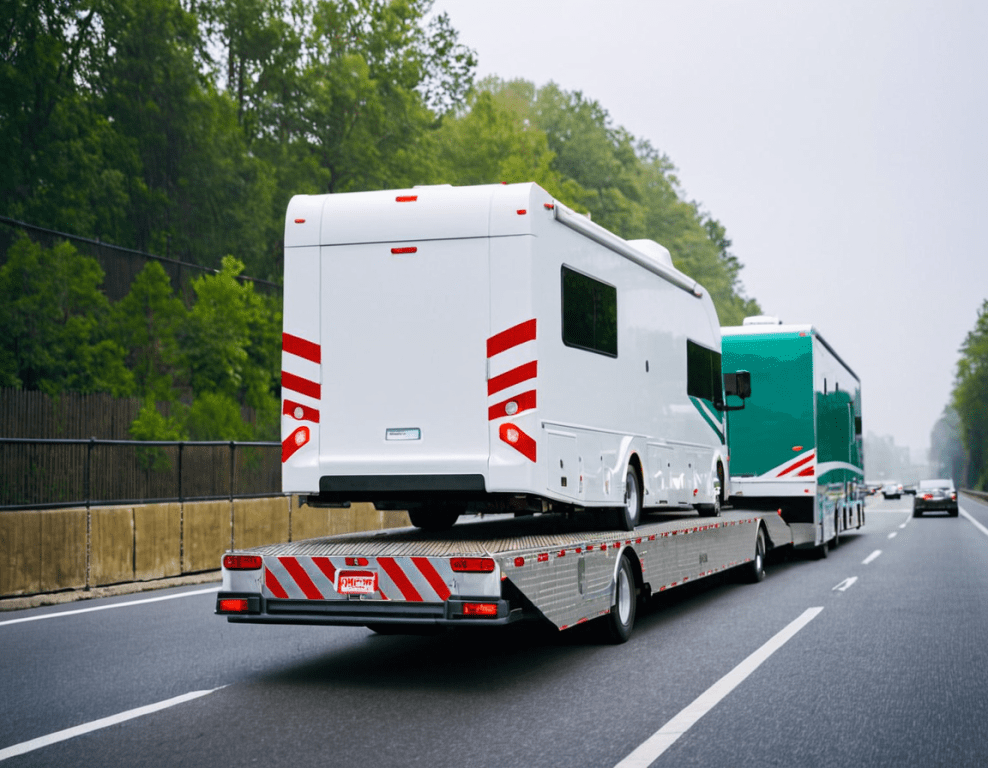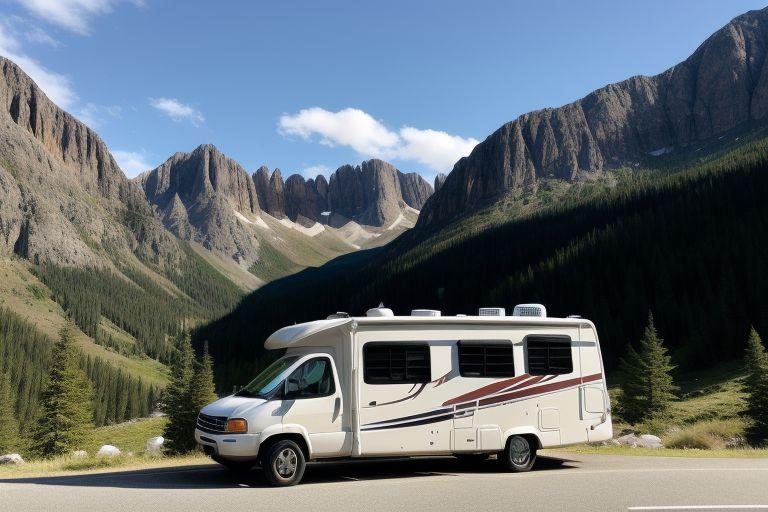
Transporting a recreational vehicle (RV) isn't just about hooking it up to a tow vehicle and hitting the road. There are specific regulations and requirements that ensure safety on the highways and compliance with legal standards. In this article, we explore the crucial aspects of what you need to know about RV shipping. Whether you're a first-time RV owner looking to relocate your mobile haven or an experienced hauler, understanding "what are the regulations and requirements for transporting an RV?" is essential. This knowledge ensures that your transport is both safe and compliant with federal and state laws, protecting you and your investment.

Key Regulations and Requirements for RV Shipping
When planning to transport an RV, the first thing to consider is the overarching federal and state regulations designed to ensure safety and efficiency in travel trailers and motorhome movements. At a federal level, anyone driving a tow vehicle that hauls a recreational vehicle must adhere to specific guidelines, which might require a commercial driver's license (CDL) if the RV exceeds certain weight limits. It’s crucial to check whether your setup meets the definition of a commercial vehicle, as this classification can significantly impact the licensing requirements.
Moreover, insurance coverage is not just advisable but often mandatory, offering protection against potential damages during transit. The requirements can vary, so it’s important to verify the specifics with your insurance provider. On top of licensing and insurance, ensuring your RV complies with size and weight restrictions is vital. Exceeding these can lead to fines and complications during your journey. Each state may have additional rules about the maximum allowable dimensions and whether specific permits are needed for oversized vehicles.
Detailed Breakdown of Federal Regulations
Navigating the federal regulations for transporting recreational vehicles requires an understanding of various compliance checkpoints set by the Department of Transportation (DOT). The federal government mandates that all commercial vehicles, including some RVs based on their size and usage, adhere to regulations concerning safety standards, vehicle maintenance, and periodic inspections. For instance, drivers might need to maintain logs if traveling across state lines.
If the RV is used for commercial purposes, or if it's particularly large and classified under commercial vehicles, the driver must possess a commercial driver's license. This is crucial not just for legality but for safety, as operating large recreational vehicles can be challenging and requires specialized skills. Furthermore, if the RV or any accompanying vehicle is involved in hauling hazardous materials, additional endorsements on the driver’s license are necessary, and strict adherence to handling and disclosure protocols becomes a part of your travel planning.
Understanding these federal requirements helps in planning a compliant route and schedule for transporting your recreational vehicle. It ensures that all legal standards are met, avoiding potential delays and legal issues while on the road.
State and Local Regulations
While federal regulations provide a framework, state and local rules can vary significantly, affecting how you plan and execute an RV transport:
- Varied Weight Limits: Different states have their own weight restrictions for RVs like fifth wheels and truck campers. Check local DOT websites for specific weight limits to avoid fines.
- Special Permits for Oversized Loads: If your RV setup qualifies as an oversized load, you may need special permits. This is common with larger fifth wheel setups that exceed usual size and weight norms.
- Consideration for Other Drivers: States may have specific rules about RVs to ensure the safety of all road users. These can include mandatory rest periods for drivers and restrictions on which lanes RVs can use.
Understanding these nuances is crucial for anyone looking to embark on an RV adventure across state lines.

Licensing and Insurance Requirements
Meeting the licensing and insurance requirements is essential for legally and safely transporting your RV:
- Commercial Driver’s License (CDL): Required if the RV or its combination with another vehicle meets certain conditions, like weight. A CDL ensures that drivers have the necessary training to operate large vehicles on public roads.
- Adequate Insurance Coverage: Protects your precious cargo in case of accidents or damage. Ensure that your policy covers the specifics of RV transport, including any potential liabilities.
- Health and Safety Compliance: Depending on the state, additional health and safety certifications might be required, especially if transporting for private businesses or commercial purposes.
Each state offers unique guidelines, so it’s important to review these requirements well before your trip.
Preparing an RV for Transport
Proper preparation can prevent damage to your RV and ensure compliance with regulations:
External Preparation:
- Secure all loose items on the exterior such as antennas, shutters, and awnings.
- Check tire pressure and lug nuts for proper tightness.
- Ensure all lights and signals are working correctly to communicate effectively with other drivers.
Internal Preparation:
- Secure all internal items to prevent movement and damage while in transit.
- Turn off all gas appliances and electrical items.
- Close and lock windows and doors to prevent them from opening during transport.
Documentation and Compliance:
- Keep all relevant documents readily accessible, including registration, insurance, and any special permits for oversized loads.
- Double-check that all display panels and identification numbers are visible and compliant with state regulations.
These steps help ensure that your RV arrives in the same condition it left, ready for your next adventure. Proper preparation not only secures your RV during transport but also aids in smooth interactions with authorities along your route.

Conclusion
As we wrap up our exploration of the regulations and requirements for transporting an RV, it’s clear that compliance is not just about following the law—it’s about ensuring safety for everyone on the road. Whether you're moving a compact travel trailer or a large fifth wheel, understanding and adhering to the various guidelines will help protect your investment and make your journey smoother and more enjoyable. From obtaining the correct licenses to ensuring your vehicle meets size limits and weight specifications, each step is crucial. Remember, the goal of these regulations is to maintain road safety and efficiency, allowing you to focus on the adventures ahead.
Ready to transport your RV safely and efficiently? Trust A1 Auto Transport, the experts in RV shipping. Contact us today for a free quote and let us handle the logistics while you plan your next adventure. Visit our website at https://www.a1autotransport.com to get started!






 Share on Facebook
Share on Facebook Share on LinkedIn
Share on LinkedIn Share on Twitter
Share on Twitter




 Google
Google  Instagram
Instagram  Trustpilot
Trustpilot 



